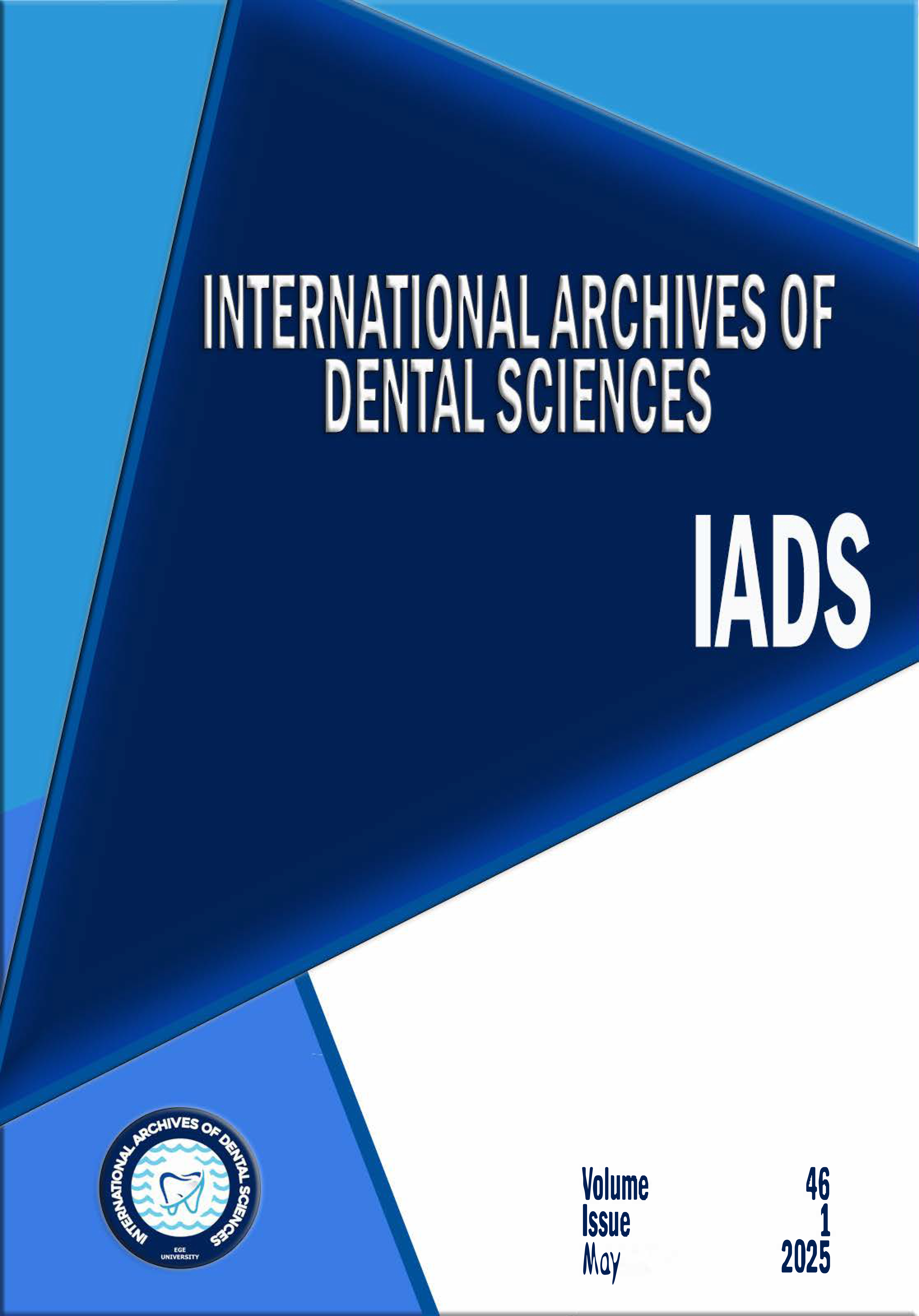
Bu eser Creative Commons Alıntı-GayriTicari-Türetilemez 4.0 Uluslararası Lisansı ile lisanslanmıştır.


Antimicrobial Effects of Boric Acid against Periodontal Pathogens
Kübra Aral1, Özge Çelik Güler1, Paul R. Cooper2, Satvir Shoker2, Sarah A. Kuehne3, Michael R. Milward41University of Birmingham, School of Dentistry, Department of Oral Biology, UK.2University of Birmingham, School of Dentistry, Oral Biology, UK
3University of Birmingham School of Dentistry and Institute of Microbiology and Infection, Oral Microbiology, UK
4University of Birmingham, School of Dentistry, Department of Periodontology, UK
INTRODUCTION: Boron is a bioactive trace element found in humans and essential for the growth and maintenance of bone and also has reported anti-inflammatory and antimicrobial activity. Boric acid is a well-characterised boron-containing compound which reportedly can reduce periodontal inflammation. Thus, the aim of the current study was to evaluate the possible bactericidal and/or bacteriostatic effects of boric acid on the periodontal pathogens: Fusobacterium nucleatum and Porphyromonas gingivalis.
METHODS: Minimum inhibitory concentration (MIC) of boric acid on F. nucleatum (ATCC 10953) and P. gingivalis (ATCC 33277) were determined by the broth microdilution method. Overnight cultures were diluted to the following starting concentrations: 5x105 cfu/ml for F. nucleatum and 5x106 cfu/ml for P. gingivalis. After incubation for 48h at 37°C in an anaerobic cabinet the absorbance of the cultures was measured. The minimum bactericidal concentration (MBC) was determined by plating an aliquot of the cell suspensions on agar plates, and bacteria were counted after incubation at 37°C for 48 h under anaerobic conditions.
RESULTS: Boric acid was able to inhibit the growth of F. nucleatum at a concentration of 780 nM and P. gingivalis at a concentration of 1.56 µM. The MBC of boric acid was 19 mM for F. nucleatum however using tested concentrations (75 mM-1nm) were insufficient to provide an MBC for P. gingivalis.
DISCUSSION AND CONCLUSION: Boric acid may be a possible candidate for providing local antimicrobial actions on periodontal pathogens and therefore may have potential as a therapeutic intervention in the management of periodontal disease.
Borik Asitin Periodontal Patojenler Üzerine Olan Antimikrobiyal Etkileri
Kübra Aral1, Özge Çelik Güler1, Paul R. Cooper2, Satvir Shoker2, Sarah A. Kuehne3, Michael R. Milward41University of Birmingham, School of Dentistry, Department of Oral Biology, UK.2University of Birmingham, School of Dentistry, Oral Biology, UK
3University of Birmingham School of Dentistry and Institute of Microbiology and Infection, Oral Microbiology, UK
4University of Birmingham, School of Dentistry, Department of Periodontology, UK
GİRİŞ ve AMAÇ: Bor, kemiğin gelişimi ve idamesi için gerekli olup antiinflamatuar ve antimikrobiyal özelliklere sahip biyoaktif eser bir elementtir. Borik asit sıklıkla kullanılan bir bor bileşiği olup periodontal inflamasyonu azaltabildiği gösterilmiştir. Bu çalışmanın amacı borik asitin periodontal patojenlerden Fusobacterium nucleatum and Porphyromonas gingivalis üzerine olabilecek mevcut bakterisidal ve/veya bakteriostatik etkilerini incelemektir.
YÖNTEM ve GEREÇLER: Borik asitin F. nucleatum (ATCC 10953) ve P. gingivalis (ATCC 33277) için minimum inhibitör konsantrasyonu (MİK) sıvı besiyeri mikrodülisyon metodu yardımıyla saptanmıştır. Gecelik kültürler F. nucleatum için 5x105 cfu/ml ve P. gingivalis için 5x106 cfu/ml konsantrasyonuna seyreltilmiştir. Aaerobik bir kabinde 37°C de 48 saat inkübasyon sonrasında kültürlerin absorbansı ölçülmüştür. Minimum bakterisidal konsantrasyon (MBK) bakteri süspansiyonundan alınan alikotların agarlar üzerinde 37°C de 48 saat boyunca anaerobik koşullarda bekletilmesinden sonra bakterilerin sayılması sonucu elde edilmiştir.
BULGULAR: Borik asit F. nucleatum’un üremesini 780 nm da P. gingivalis’in üremesini ise 1.56 µM konsantrasyonda durdurabilmiştir. Borik asitin F. nucleatum için MBK değeri 18.75 nM olarak saptanmış fakat denenen konsantrasyonlar (75 mM-1nm) P.gingivalis için MBK değeri verememiştir.
TARTIŞMA ve SONUÇ: Borik asit periodontal patojenlere karşı lokal antimikrobial etki gösteren bir aday olabileceğinden dolayı periodontal hastalığın tedavisinde terapötik potansiyeli olabilir.
Manuscript Language: Turkish


